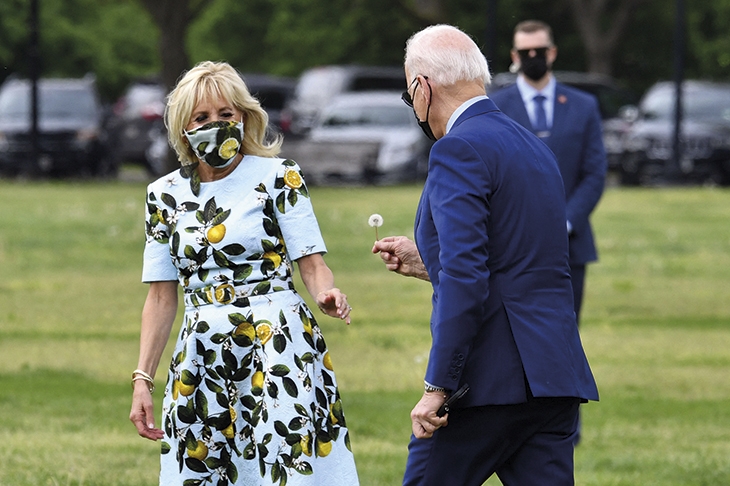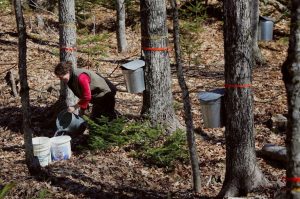Dandelions are one of the cheeriest wild flowers. They are loved by children for their ‘clock’ seed heads, are entirely edible for humans and are a source of food for many insects and birds. And yet many gardeners go to great lengths to get rid of them.
This year’s daffodils may have faded, but dandelions — their similarly colored wild replacements — are in full swing, and it’s a vintage year for them. Road verges, meadows and lawns are covered in thousands of gold polka dots, with each plant bearing half a dozen blooms. They make a boring green sward far more interesting, and are — to my mind at least — as beautiful as the daffodils that are often planted in the same spots.
Wordsworth may have been banging on about daffodils, but there is no objective reason why a dandelion, which supports far more wildlife than a daffodil, should be considered lesser. Yet there are those who see it that way. Last week President Joe Biden stooped to pick a dandelion for the First Lady while they walked to the Marine One helicopter on the White House Ellipse. If you needed further proof that nothing in America can escape angry politicization, a presenter on the right-wing site Newsmax made the wacky claim that this was a reckless thing to do since the dandelion had gone to seed so would give ‘everybody asthma’. (Jill Biden didn’t blow the seeds, perhaps because she had a mask on — not that it matters.) Why, the host went on, should we see this as some kind of sweet gesture when he’s giving his wife a ‘weed’?
I doubt many people will share his faux outrage, but he’s not alone in dismissing dandelions as mere ‘weeds’. Those who do are missing out on a lot. Dandelion leaves are peppery and were prized by Victorian cooks in salads. They’re particularly nice if you blanch them under a plant pot for a few weeks before harvesting. You can turn the flowers into wine, or use them in salads too. The roasted roots make a coffee. Insects feast on their nectar, small birds such as goldfinches on their seeds.
There are more than 200 microspecies of dandelion in the UK. They include the wonderfully named ‘Bertha’s Dandelion’ (Taraxacum berthae), a rare species with reddish-purple stripes on its petals; the Spotted Dandelion (T. maculosum), which has painterly splashes of purple on its leaves; and the tiny Ruddy Dandelion (T. rubicundum), the smallest species in the UK, and a lovely plant with very sharply toothed leaves. These teeth on the leaves are the origin of the name ‘dandelion’: it came from the medieval Latin ‘dens leonis’, meaning lion’s tooth, went via the French ‘dent-de-lion’ and ended up in the Middle English lexicon as ‘dandelion’. But it is also a very fitting name for the flowers, which do look like the sort of lion’s manes children draw.
Children tend to be better at appreciating dandelions than adults, probably because they haven’t yet acquired the belief that nature is only beautiful when we are in control of it. Dandelions cheer up a boring old lawn, and lift you with it.
This article was originally published in The Spectator’s UK magazine. Subscribe to the World edition here.


















